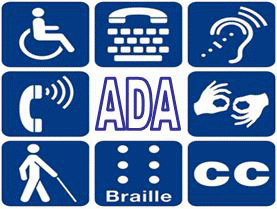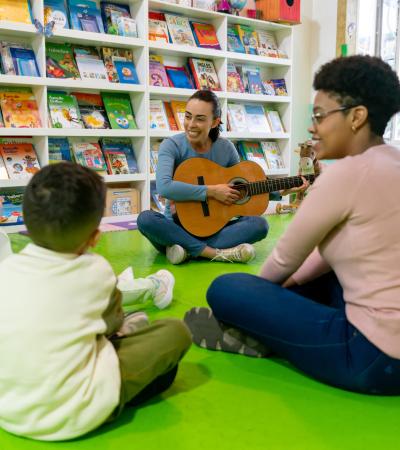This July, the nation will observe the 25th anniversary of the Americans with Disabilities Act (ADA). A far-reaching piece of civil rights legislation, the ADA calls for equal access for the 19 percent of Americans who have disabilities. For those of us with disabilities, the ADA anniversary on July 26 is sort of like the Fourth of July, so celebrating is a good thing to do. However, there are many types of accessibility to celebrate besides curb cuts and wide doors, like service animals, hearing loops and accessible websites. If your library would like to celebrate, here are a few ideas:

- a lively interactive program titled something like “Being an Access Daredevil: Celebrating 25 Years of the Americans with Disabilities Act,” featuring your library patrons with disabilities talking about what they’re celebrating, and showing off the high- and low-tech adaptive devices they use
- a display of ALA's Schneider Family Book Award winners (books for children and teens about the disability experience)
- a display of accessible library materials, like books both in print and braille, DVDs that are captioned and/or audio-described, large print newsletters and iPad games that are accessible using voiceover
- a display of memoirs about the disability experience by writers from your state
- an informational display about local service agencies and consumer groups, such as Centers for Independent Living or Aging and Disability Resource Centers
You can use a few access gizmos to attract people to the display. Use the new access symbol in your display, alongside the old one, to point out how the times are changing! Also consider posting pictures of local sites like accessible playgrounds, audible traffic lights and local disability history milestones.
Here are some useful websites that provide resources on disability history:
- The Disability History Museum promotes understanding about the historical experience of people with disabilities by recovering, chronicling and interpreting their stories. The site’s library contains document and visual stills collections.
- The ADA Legacy Project website has a plethora of resources, including resources supporting their national bus tour, which will conclude its one-year tour in July 2015.
- Activities for classrooms or programs can be found at tolerance.org.
- The Disability Social History Project provides information about famous activists in the disability movement, a disability history timeline and related information.
- The Disability Visibility Project encourages people with disabilities to participate in StoryCorps in order to share their stories for the 25th anniversary of the ADA.
- The Smithsonian National Museum of American History offers a virtual tour of the Disability Rights Movement Exhibit at the Smithsonian National Museum of American History.
Background information can be found in these books:
- "A Disability History of the United States" by Kim E. Nielsen, 2012
- "What We Have Done : An Oral History of the Disability Rights Movement" by Fred Pelka, 2012
An important step in making a good exhibit is figuring out what you can do to make the pictures and text available to those of us who cannot see. For example, perhaps you could record a description of your exhibit and hand visitors an MP3 player with the recording on it.
Together, we can celebrate how far we’ve come toward realizing the idea of accessibility behind the Americans with Disabilities Act.


